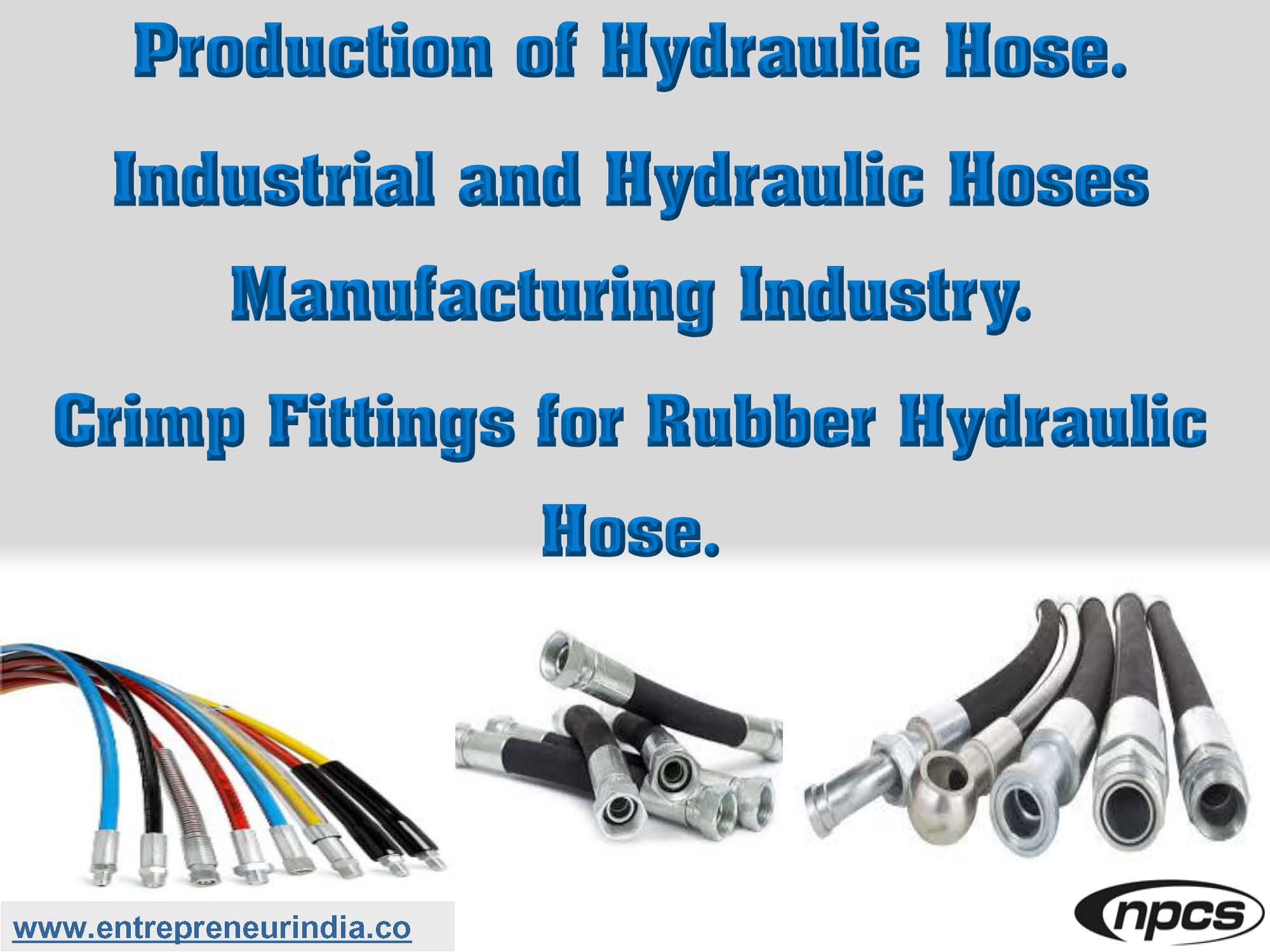
The global surge in industrial automation, infrastructure development, and machinery usage has rapidly boosted demand in the Industrial and Hydraulic Hoses Manufacturing Industry. These hoses play a critical role in transferring fluids, fuels, lubricants, air, and gases in heavy machinery, factories, construction sites, and transportation systems. Entrepreneurs looking for a capital-intensive, high-reward opportunity will find this sector attractive due to its recurring demand, vast market applications, and opportunities for specialization. With industries like oil & gas, mining, cement, construction, and agriculture relying heavily on flexible, high-performance hoses, there has never been a better time to enter this thriving sector.
Build a Scalable Business in the Industrial and Hydraulic Hoses Manufacturing Industry
The Industrial and Hydraulic Hoses Manufacturing Industry requires technical precision, process knowledge, and adherence to safety and performance standards. Once operational, it offers consistent revenue, especially when backed by OEM tie-ups, dealer networks, and export strategies.
Understand the Market Scope and Types of Hoses
This industry primarily caters to sectors such as:
-
Construction & Mining – High-pressure hoses for excavators and loaders
-
Oil & Gas – Anti-static hoses for fluid transfer
-
Agriculture – Suction and discharge hoses for irrigation
-
Automotive & Transport – Brake lines, fuel hoses, and power steering lines
-
Industrial Plants – Chemical, air, and steam hoses for operations
Popular hose types include:
-
Hydraulic hoses (SAE standard, R1, R2, R3, R13, etc.)
-
Air and water hoses
-
Fuel and oil hoses
-
PVC braided hoses
-
Food-grade and pharmaceutical hoses
-
Fire-resistant and high-temperature hoses
Choose the Right Materials and Raw Inputs
To manufacture durable and high-performance hoses, you’ll need a consistent supply of:
-
Synthetic rubber (NBR, EPDM, SBR, etc.)
-
Thermoplastics (PVC, polyurethane)
-
Steel wire braids or spirals (for reinforcement)
-
Textile braids (nylon, polyester)
-
Chemicals like curing agents, plasticizers, accelerators
All materials should comply with international standards like SAE, DIN, or IS to ensure product acceptability across industries.
See Also :- Start Biofertilizer Production Unit
Set Up the Ideal Manufacturing Infrastructure
Setting up a Industrial and Hydraulic Hoses Manufacturing Industry facility requires strategic layout and clean segregation of work areas. Minimum space requirement is around 10,000–20,000 sq. ft. for a medium-scale plant.
Key areas include:
-
Rubber compounding and mixing zone
-
Hose extrusion section
-
Braiding/reinforcement unit
-
Vulcanization/curing area
-
Hose cutting, testing, and crimping section
-
Packaging and dispatch unit
Proper layout ensures efficient flow of materials and minimizes contamination or defects.
Understand the Hose Manufacturing Process
The production process for hydraulic and industrial hoses includes the following steps:
-
Rubber Compounding – Prepare rubber mix with specific properties.
-
Extrusion – Form the hose’s inner tube through extrusion machines.
-
Reinforcement – Apply steel wire or textile braid wrapping.
-
Outer Covering – Add external rubber layer for protection.
-
Curing – Vulcanize the hose in a steam autoclave or microwave.
-
Testing – Perform burst tests, pressure cycle tests, and leak checks.
-
Crimping & Assembly – Attach fittings and connectors.
-
Branding & Packaging – Label the hoses as per client specs and standards.
Every step demands precision to ensure the hoses withstand high pressure and harsh environments without failure.
Comply with Licensing and Quality Standards
To legally operate in this industry, you must acquire:
-
Factory License and Pollution NOC
-
GST Registration
-
ISO 9001 Certification
-
BIS Certification (IS 7654 for rubber hoses, IS 9573 for gas hoses)
-
CE Marking (for export)
-
Fire and safety compliance certifications
Following international standards like SAE and DIN boosts your credibility and allows you to sell to MNCs and institutional buyers.
See Also :- Artificial Marble Tiles
Estimate the Investment and Returns
Initial investment for a medium-sized Industrial and Hydraulic Hoses Manufacturing Industry unit ranges from ?1.5 to ?3 crore. Major cost components include:
-
Extrusion lines and curing presses: ?80 lakhs
-
Braiding machines and crimping tools: ?40 lakhs
-
Testing labs and QC equipment: ?15 lakhs
-
Infrastructure and utilities: ?40 lakhs
-
Working capital: ?25–50 lakhs
A unit producing 20,000–50,000 meters/month can achieve sales of ?1–2 crore monthly, depending on product type and client base. Average gross margin ranges between 25%–35%.
Target Market Segments for Distribution
Position your business across multiple sectors to reduce dependency on one segment. Your potential clients include:
-
OEMs in construction, automobile, and agriculture
-
Distributors and industrial suppliers
-
Government departments (railways, defense, PSU plants)
-
Oil & gas companies and refineries
-
Exporters and trading houses
Bulk orders from institutions ensure regular cash flow and better utilization of capacity.
Drive Growth Through Marketing and Partnerships
Grow your presence in the Industrial and Hydraulic Hoses Manufacturing Industry by using effective strategies like:
-
Partnering with large OEMs and offering private-label manufacturing
-
Creating a dealer and distributor network across industrial clusters
-
Participating in expos like EXCON, IMTEX, and BAUMA
-
Offering digital product catalogs for faster B2B outreach
-
Showcasing strength through certifications and quality standards
Providing after-sales service, fitting support, and quick delivery can give your business a competitive edge.
Focus on Innovation and Expansion
Stay competitive by investing in R&D to develop:
-
High-pressure, ultra-flexible hoses
-
Fireproof and flame-retardant variants
-
Multi-layered hoses for food and pharma
-
Smart hoses with embedded sensors
-
Eco-friendly materials for sustainable manufacturing
Also consider forward integration like manufacturing hose fittings, couplings, or offering installation services to increase revenue.
See Also :- Hotel Business in India
Conclusion
The Industrial and Hydraulic Hoses Manufacturing Industry offers an exciting opportunity for entrepreneurs who seek high-volume production, consistent market demand, and strong profit potential. With the right infrastructure, technical know-how, and business development strategy, you can establish a reputable brand in one of the most vital industrial sectors. As industries expand, so will the demand for durable, high-performance hoses—making this the perfect time to invest and grow.





